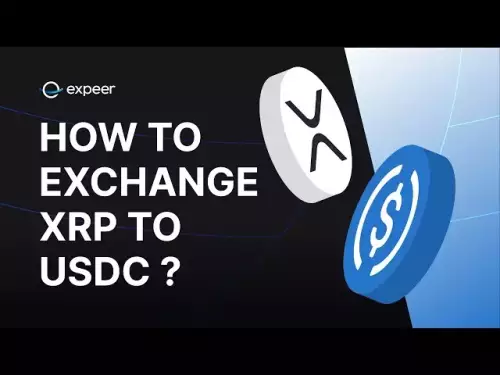-
 bitcoin
bitcoin $112715.707551 USD
-1.71% -
 ethereum
ethereum $4101.475385 USD
-3.01% -
 tether
tether $1.000644 USD
-0.02% -
 bnb
bnb $1207.619465 USD
-6.77% -
 xrp
xrp $2.501451 USD
-3.98% -
 solana
solana $202.947124 USD
-3.32% -
 usd-coin
usd-coin $1.000295 USD
0.04% -
 dogecoin
dogecoin $0.203884 USD
-4.47% -
 tron
tron $0.317154 USD
-1.72% -
 cardano
cardano $0.695009 USD
-4.43% -
 hyperliquid
hyperliquid $38.853961 USD
-8.23% -
 chainlink
chainlink $18.988674 USD
-4.64% -
 ethena-usde
ethena-usde $1.000233 USD
-0.03% -
 stellar
stellar $0.337050 USD
-3.63% -
 bitcoin-cash
bitcoin-cash $536.861728 USD
-1.28%
How to set LINK stop loss and take profit points? Practical trading strategy sharing
To manage risk and maximize profits in LINK trading, set stop loss points below support levels and take profit points below resistance levels, adjusting as market conditions change.
Apr 29, 2025 at 04:01 pm

Setting stop loss and take profit points for Chainlink (LINK) trading is a crucial aspect of managing risk and maximizing profits. In this article, we will explore a practical trading strategy for LINK, focusing on how to effectively set stop loss and take profit points. This strategy will help you navigate the volatile cryptocurrency market with greater confidence.
Understanding LINK and Its Volatility
LINK, the native token of the Chainlink network, is known for its volatility. This volatility can be both an opportunity and a risk for traders. Understanding the price movements of LINK is essential before setting any stop loss or take profit points. By analyzing historical price data and market trends, you can better anticipate potential price swings and set your trading parameters accordingly.
Setting Stop Loss Points
A stop loss order is designed to limit an investor's loss on a position in a security. For LINK, setting an appropriate stop loss point is crucial to protect your investment from significant downturns. Here’s how you can set a stop loss point for LINK:
- Determine Your Risk Tolerance: Before entering any trade, decide how much you are willing to lose. This will help you set a stop loss that aligns with your risk management strategy.
- Analyze Historical Data: Look at the historical price movements of LINK to identify common support levels. These levels can serve as potential stop loss points.
- Set the Stop Loss: Place your stop loss order slightly below a recent support level. For example, if LINK has a support level at $10, you might set your stop loss at $9.80 to give the price some room to fluctuate.
Setting Take Profit Points
Take profit orders are used to lock in profits when a security reaches a certain price level. Setting a take profit point for LINK involves identifying resistance levels where the price is likely to peak before retracing. Here’s how to set a take profit point:
- Identify Resistance Levels: Analyze the price chart to find levels where LINK has historically faced resistance. These levels can serve as potential take profit points.
- Set the Take Profit: Place your take profit order just below a resistance level. For instance, if LINK faces resistance at $15, you might set your take profit at $14.80 to ensure you capture the profit before a potential downturn.
Practical Trading Strategy for LINK
A practical trading strategy for LINK involves combining technical analysis with risk management. Here’s a step-by-step approach to implementing this strategy:
- Technical Analysis: Use indicators such as moving averages, RSI, and MACD to identify potential entry and exit points. For example, a bullish crossover of the 50-day and 200-day moving averages might signal a good entry point.
- Entry Point: Enter a long position when the technical indicators suggest a bullish trend. For instance, if the price of LINK breaks above the 50-day moving average, it might be a good time to buy.
- Stop Loss: Set your stop loss below the most recent support level to minimize potential losses. If LINK breaks below this level, it could indicate a trend reversal.
- Take Profit: Set your take profit just below a resistance level to lock in profits before a potential price drop. Monitor the price closely as it approaches the take profit level to adjust if necessary.
Monitoring and Adjusting Your Strategy
The cryptocurrency market is highly dynamic, and LINK prices can change rapidly. It’s important to monitor your trades and adjust your stop loss and take profit points as needed. Here are some tips for monitoring and adjusting your strategy:
- Regularly Review Your Trades: Check your open positions daily to see how they are performing. Adjust your stop loss and take profit points if the market conditions change.
- Use Trailing Stop Losses: A trailing stop loss can help you lock in profits as the price of LINK increases. This type of stop loss moves up with the price, allowing you to capture more gains while still protecting against downturns.
- Stay Informed: Keep up with the latest news and developments in the Chainlink ecosystem. Announcements about partnerships or updates to the network can significantly impact the price of LINK.
Example of a LINK Trading Scenario
Let’s walk through an example of how to apply this strategy in a real-world scenario. Suppose you decide to enter a long position on LINK when the price breaks above the 50-day moving average at $12.
- Entry Point: You buy LINK at $12.
- Stop Loss: You set your stop loss at $11.80, just below the recent support level of $12.
- Take Profit: You set your take profit at $14.80, just below the resistance level of $15.
As the price of LINK moves, you monitor your position. If the price reaches $13, you might adjust your stop loss to $12.80 to lock in some profit. If the price continues to rise and reaches $14, you might move your take profit to $14.90 to capture more gains.
Frequently Asked Questions
Q: How often should I adjust my stop loss and take profit points for LINK?A: It’s important to review your trades daily and adjust your stop loss and take profit points based on current market conditions. If the price of LINK moves significantly, you might need to adjust your parameters more frequently to manage risk effectively.
Q: Can I use this strategy for other cryptocurrencies besides LINK?A: Yes, this strategy can be adapted for other cryptocurrencies. However, each cryptocurrency has its own volatility and market dynamics, so you should adjust your technical analysis and risk management accordingly.
Q: What should I do if the price of LINK breaks my stop loss?A: If the price of LINK breaks your stop loss, it’s important to accept the loss and move on. Review your trade to see what went wrong and use that information to improve your future trades. Remember, stop losses are there to protect your capital.
Q: How can I improve my technical analysis skills for trading LINK?A: Improving your technical analysis skills involves continuous learning and practice. Use demo accounts to practice trading without risking real money, and study different indicators and chart patterns. Joining trading communities and forums can also provide valuable insights and feedback on your strategies.
Disclaimer:info@kdj.com
The information provided is not trading advice. kdj.com does not assume any responsibility for any investments made based on the information provided in this article. Cryptocurrencies are highly volatile and it is highly recommended that you invest with caution after thorough research!
If you believe that the content used on this website infringes your copyright, please contact us immediately (info@kdj.com) and we will delete it promptly.
- Tokenization Takes Center Stage: SEC-Registered Stock Tokens Reshape Finance
- 2025-10-15 22:25:13
- Bitcoin Seized, Transferred: A New York Minute on Crypto's Wild Ride
- 2025-10-15 22:25:13
- Milk & Mocha's $HUGS: Can This Crypto Presale Deliver a 100x Portfolio?
- 2025-10-15 22:30:01
- Memecoins Grow Up: $HUGS Presale Offers Real Utility
- 2025-10-15 22:45:13
- HUGS Launch, Crypto Bull Run, and a Perfect Storm Brewing?
- 2025-10-15 22:45:13
- Zero Knowledge Proof, Whitelists, and the Future of Blockchain Privacy
- 2025-10-15 22:30:01
Related knowledge

Practical parameter settings for a Bitcoin multi-timeframe moving average system
Sep 18,2025 at 10:54pm
Optimizing Timeframe Combinations for Bitcoin Trading1. Selecting appropriate timeframes is crucial when building a multi-timeframe moving average sys...

How can I filter out false breakouts in Dogecoin high-frequency trading?
Sep 22,2025 at 01:00am
Understanding False Breakouts in Dogecoin Trading1. A false breakout occurs when Dogecoin's price appears to move beyond a defined support or resistan...

Techniques for identifying tops and bottoms in the Bitcoin on-chain NVT model
Sep 20,2025 at 07:54pm
Understanding the NVT Model in Bitcoin Analysis1. The Network Value to Transactions (NVT) ratio is often described as the 'P/E ratio' of the cryptocur...

What does the surge in open interest in Bitcoincoin futures mean?
Sep 20,2025 at 11:18pm
Understanding the Surge in Dogecoin Futures Open Interest1. A surge in open interest within Dogecoin futures indicates a growing number of active cont...

How can I use the Ethereum USDT premium to gauge market sentiment?
Sep 18,2025 at 11:55pm
Understanding the Ethereum USDT Premium1. The Ethereum USDT premium refers to the price difference between USDT (Tether) traded on Ethereum-based plat...

What should I do if Ethereum staking yields decline?
Sep 20,2025 at 06:18am
Understanding the Causes Behind Declining Ethereum Staking Yields1. The Ethereum network transitioned to a proof-of-stake consensus mechanism with the...

Practical parameter settings for a Bitcoin multi-timeframe moving average system
Sep 18,2025 at 10:54pm
Optimizing Timeframe Combinations for Bitcoin Trading1. Selecting appropriate timeframes is crucial when building a multi-timeframe moving average sys...

How can I filter out false breakouts in Dogecoin high-frequency trading?
Sep 22,2025 at 01:00am
Understanding False Breakouts in Dogecoin Trading1. A false breakout occurs when Dogecoin's price appears to move beyond a defined support or resistan...

Techniques for identifying tops and bottoms in the Bitcoin on-chain NVT model
Sep 20,2025 at 07:54pm
Understanding the NVT Model in Bitcoin Analysis1. The Network Value to Transactions (NVT) ratio is often described as the 'P/E ratio' of the cryptocur...

What does the surge in open interest in Bitcoincoin futures mean?
Sep 20,2025 at 11:18pm
Understanding the Surge in Dogecoin Futures Open Interest1. A surge in open interest within Dogecoin futures indicates a growing number of active cont...

How can I use the Ethereum USDT premium to gauge market sentiment?
Sep 18,2025 at 11:55pm
Understanding the Ethereum USDT Premium1. The Ethereum USDT premium refers to the price difference between USDT (Tether) traded on Ethereum-based plat...

What should I do if Ethereum staking yields decline?
Sep 20,2025 at 06:18am
Understanding the Causes Behind Declining Ethereum Staking Yields1. The Ethereum network transitioned to a proof-of-stake consensus mechanism with the...
See all articles










































































